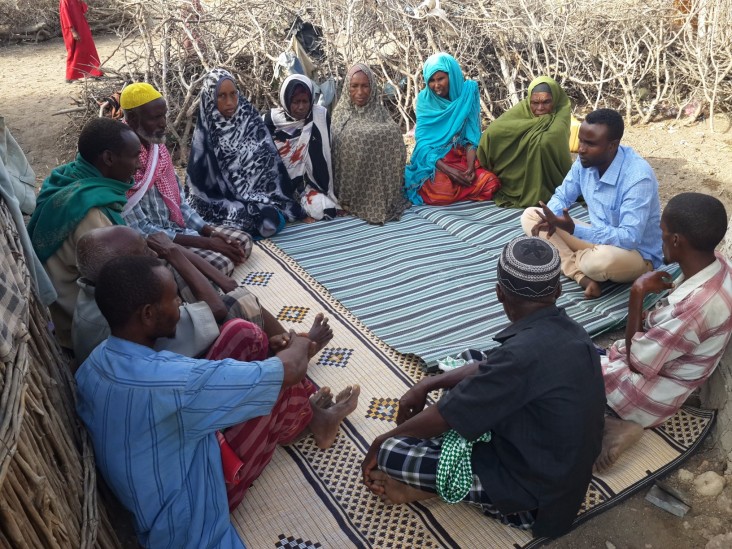
July 2017—Muna*, a 31-year-old mother of eight, has seen her farm in Somalia grow, even as the country suffers from a severe drought and risk of famine. Muna also cares for her elderly mother and ill nephew, and is expecting this season’s harvest to be large enough to feed her family for up to six months with sorghum and beans left over to sell at market.
Through a USAID-supported food assistance project, families like Muna’s receive monthly vouchers for three months during the April-June rainy season, the length of time needed to plant and harvest a staple crop. USAID’s implementing partner distributes vouchers worth a set amount to beneficiaries who then redeem the vouchers for cash to purchase foods of their choice in local markets.
In an emergency context, this type of voucher enables people to access food quickly and supports and strengthens local markets where markets are still functioning. To complement the vouchers for purchasing food, farming households like Muna’s receive a variety of high-performing seeds to grow nutritious foods, hermetic bags to properly store their harvest, and other farming tools.
Muna now grows watermelon, onions, tomatoes, sorghum and beans, and for the first time she has been able to hire additional workers to help till her farm. Before, Muna relied on relatives to help her provide food for her children, a common practice in Somali culture. Now, despite high food prices, the vouchers have enabled her to buy enough food for her family, which means she can also afford to pay her children’s school fees.
“Without the program, I honestly do not know what I would have done to face the drought because the situation was bad,” Muna says. “I want my children to have a good future, better than what my husband and I have endured. I want them to get a quality education and good jobs so that they can help themselves and others.”
The program is reaching 236,000 people across nine regions of Somalia with these food assistance activities, funded almost entirely by USAID. Each dollar spent on the livelihood farming package results in $8.60 of value in sorghum and cowpea production to sustain vulnerable families. These early investments prevent the crisis from worsening and maximize the impact of U.S. assistance, saving humanitarian resources and meeting urgent food needs.
“The program has been a wonderful thing. It has had a big impact not only on me, but the whole community,” said Muna.
Approximately 6.7 million people—more than half of the total population in Somalia—are currently in urgent need of humanitarian assistance as a result of the combined effects of drought, poor harvests, ongoing conflict, and high levels of malnutrition. More than 3.2 million people face life-threatening levels of food insecurity, most of whom live in remote areas. For some families, it will still be many months until they can rely on their land and livestock to feed their families again.
The United States remains committed to helping the people of Somalia and is currently targeting 3 million people with humanitarian assistance. Since October 2016, the United States has contributed $336 million to the response, including the provision of urgently needed food and agriculture assistance, malnutrition treatment, safe drinking water, health and hygiene services, shelter, and protection services for people made vulnerable by this crisis, including psychosocial support and medical treatment for victims of gender-based violence. This assistance is also supporting refugees who have fled Somalia to neighboring countries in the Horn of Africa.
*Name changed to protect identity.
RELATED LINKS
Follow @USAIDSomalia, on Facebook, on YouTube







Comment
Make a general inquiry or suggest an improvement.